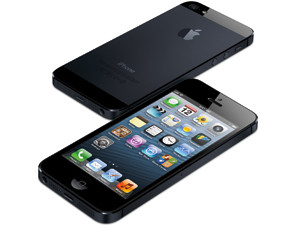
iPhone 5 sales topped five million over the first weekend, beating the previous record set by the iPhone 4S, but still falling short of estimates.
The next-generation iPhone went on sale in nine regions on Friday (21 September), including the US, UK, Australia, Japan, Canada, France, Germany, Hong Kong and Singapore. Last year, four million iPhone 4S handsets were sold over the first weekend.
Apple issued a statement saying demand for the iPhone 5 has exceeded the initial supply, and while the majority of pre-orders have been shipped to customers, many are scheduled to be shipped in October.
Apple CEO Tim Cook says: "Demand for iPhone 5 has been incredible and we are working hard to get an iPhone 5 into the hands of every customer who wants one as quickly as possible.
"While we have sold out of our initial supply, stores continue to receive iPhone 5 shipments regularly and customers can continue to order online and receive an estimated delivery date. We appreciate everyone's patience and are working hard to build enough iPhone 5s for everyone."
Apple's statement marks the first time the company has said it had completely sold out of initial supplies of a new iPhone. While Apple has declined to comment on supply constraints, it has been speculated the company is experiencing shortages of certain components needed for the device.
Worst case
The iPhone 5 received record-breaking pre-orders, topping two million in just 24 hours (double those received for the iPhone 4S last year). This led to analysts estimating first weekend sales of between six million and 10 million units. Apple shares dropped 1.3% on Monday following the company's announcement of sales figures.
Last week, top Apple analyst for Piper Jaffray Gene Munster, went so far as to say six million units sold would be a "worst case scenario".
In response to the disappointing figures, Munster said to Business Insider: "We believe there are two factors that negatively impacted the number. First, our sales expectation assumed that Apple would include all phones pre-ordered online. We believe that this may have been up to one million additional units as units pre-ordered after the middle of the first day were projected to be available in October.
"Second, we noted 1.25 days of Apple Retail inventory compared to 2.5 days during the 4S launch. Our eight million estimate assumed full weekend availability and the counting of all online pre-orders.
"We believe that if supply was not a constraint and Apple included all pre-orders, the launch weekend number would have been closer to seven-eight million, assuming one million October pre-order sales and an additional one-two million units at retail."
Fading halo?
MD of World Wide Worx Arthur Goldstuck says the estimates were perhaps unrealistic and based on the hype surrounding the two million order level on the first day of pre-orders.
"Some had expected bigger day-one numbers, so coming in at that level should have tempered expectations," says Goldstuck.
"Much will be said about why the sales should not be seen as disappointing, but the truth is that first-weekend sales were only 25% up on those of the 4S, which had been an incremental upgrade, while this is a new device altogether. That 'only' would be huge for any other brand, but for Apple it suggests the halo is beginning to wear off." Last year, iPhone 4S sales more than doubled those of the iPhone 4.
According to Goldstuck, there is a strong sense that the iPhone 5 is appealing more to existing iPhone owners than to those who haven't owned one before.
"That said, the iPhone will continue taking market share from most brands until their new high-end smartphones arrive. It is unlikely, though, that they will take share from Samsung, as the Galaxy S3 has been successfully positioned as a more advanced phone."
Goldstuck says supply constraints are inevitable around such volumes, "regardless of whether initial orders were five million or 10 million", adding that this could delay release in non-priority markets. "Chances are that the supply bottleneck would be resolved by the time the phone is due for launch here.
"Going by the time delay between global and local release in the past, it should arrive early November, but that could be delayed by both supply constraints and the lack of locally produced nano-SIM cards," says Goldstuck.
The iPhone 5 is due to go on sale in 22 more countries on 28 September, and more than 100 countries by year-end.
Share